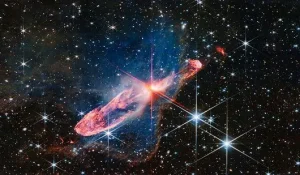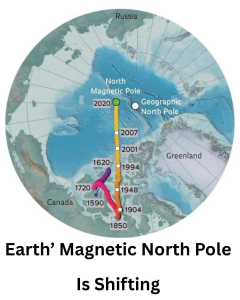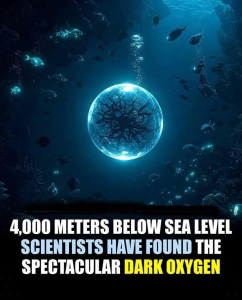
In the inky blackness, 4,000 meters below the surface of the Pacific Ocean, scientists have stumbled upon something truly extraordinary—“Dark Oxygen.” This discovery, made in the Clarion-Clipperton Zone, could reshape our understanding of how life can emerge and survive on Earth—and maybe even elsewhere in the universe.
Traditionally, we’ve believed that oxygen production on Earth is tied solely to photosynthesis, the process through which plants and certain microbes use sunlight to convert carbon dioxide and water into oxygen and glucose. But what if there’s another way?
The Mystery of Dark Oxygen
Deep below the surface, sunlight never reaches. Yet researchers found that oxygen is somehow being generated in these sunless depths. How?
The answer may lie in bizarre seafloor structures called polymetallic nodules—strange, metallic lumps rich in manganese, nickel, cobalt, and other elements. These nodules seem to act like tiny “geobatteries,” naturally generating small voltages that can split water molecules into hydrogen and oxygen—without any sunlight.
It’s a process that could redefine our assumptions about Earth’s biochemical cycles and the minimum conditions required for life.
Implications for the Origin of Life
If oxygen can form in deep ocean environments without sunlight, it opens up entirely new possibilities for where life might begin. Many scientists already speculate that life on Earth may have started near hydrothermal vents—high-pressure, mineral-rich fissures on the seafloor. The presence of dark oxygen lends new credibility to that idea.
More than that, it hints at potential life on other worlds. Jupiter’s moon Europa or Saturn’s moon Enceladus, both of which may harbor subsurface oceans, could host similar chemical processes. If oxygen can be created without sunlight, the search for extraterrestrial life just became a lot more exciting.
A Warning About Deep Sea Mining
But this breakthrough also comes with a caution. The same Clarion-Clipperton Zone is a target for deep-sea mining, which aims to harvest those very polymetallic nodules. Mining these areas could disrupt fragile ecosystems and potentially destroy the geochemical processes that are still only beginning to be understood.
Are we on the verge of unearthing the secrets of life’s origin, only to erase them in our rush for resources?
In Conclusion
The discovery of dark oxygen is more than just a scientific curiosity—it’s a paradigm shift. It challenges what we know about oxygen production, sparks new ideas about the beginning of life, and forces us to confront how we interact with Earth’s most mysterious frontiers.
The deep sea still holds secrets—some ancient, some perhaps cosmic. The question is: will we protect them long enough to understand their story?
Tags:
deep sea, oceanography, dark oxygen, polymetallic nodules, geobiology, life origins, deep sea mining, science discovery, photosynthesis alternative, environmental impact





